Lighting Spotlight: Lighting Designer Freddie Bonfanti

Now heading Raiden Studios, a full-service fashion and events lighting design consultancy, Freddie Bonfanti injects his lighting designs with the same passion and unique perspective he's gained over the course of his career; carefully considering his space and casting light in such a way that it becomes a part of the show or installation. Working his way up from the yard to sets to runway shows in London and Moscow, Freddie's varied experience allows him to create designs that push boundaries with new ideas.
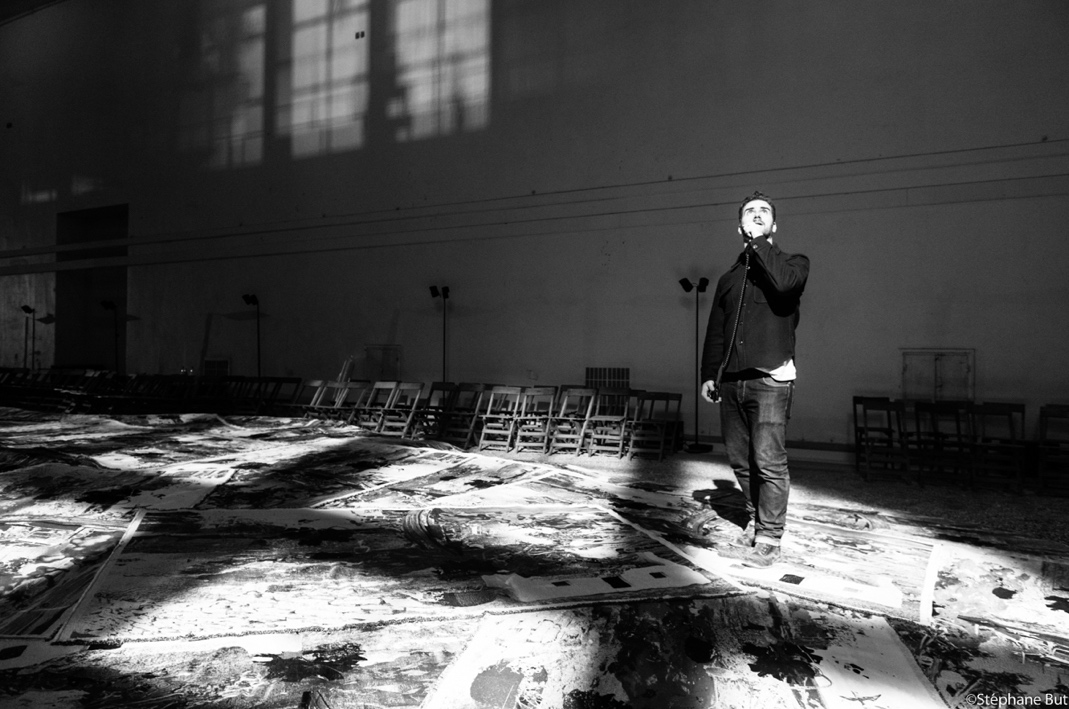
Focusing Alexander McQueen AW18.
Fashion! Turn to the Lighting
Armed with a Cinematography degree and electricians training, Freddie worked his way from the yard, to gaffering on sets, to discovering lighting for fashion.
I started out in Scotland, working on short films and features. In 2009 I moved to Australia where I got a job as a pat testing electrician at Fox Lighting in Sydney. One day in the yard I met one of Australia's biggest gaffers, Shaun Conway, who gave me a chance to work for him on set and from there he offered me a place in his team of electricians, mainly as a truck person, looking after all his equipment. It wasn't a great job, but it proved essential to refine my skills and knowledge with the equipment. From there I basically started working on big films in Australia and high-end commercials - that's where I refined my film lighting knowledge. Shaun is a fantastic gaffer and a wonderful person, and the Australian sparks were very good, I learned a lot over there.
When I came back to London, I started gaffering on features and commercials, but after a few years I felt like I was getting tired of the film industry. One day around 2013, I was asked to gaffer a fashion show for a big Italian lighting designer called Manolo; I had never done a show before and my curiosity pushed me to accept the gig.
Finding true passion in designing lighting for live fashion shows with help from a mentor.
The job was an Alexander McQueen show and it's fair to say, it opened my eyes. I didn't know that lighting a runway show would be so interesting and incredibly creative: the big shows at Fashion Week are born out of a huge creative process that involves the designer, the creative production and all the other creatives involved. Lighting is crucial in this process and the lighting designer has huge responsibilities.
You get to work in amazing locations, and precision is key. Learning that early was fundamental. I kept working with Manolo on a lots of fashion shows and events in the following five years, I then became his associate lighting designer and friend. We really built a good relationship. The amount of stuff I learned in those five years was unique. I would say Manolo is one of the top three lighting designers in the fashion business and he was able to teach me all the secrets of fashion lighting design which is very different from film lighting.
A Difference of Precision in Fashion Lighting
Film lighting is an incredibly creative process, but there is significantly more leeway when it comes to mistakes. There aren't many physical restrictions on where to place your lights based on where the lens is looking and, if what you planned isn't working, you can easily move the equipment to different parts of the set. Fashion show lighting design, however, is often irreversible and unforgivable. Once you have the technical plans and a brief at hand, you need to think carefully and commit to a design, lighting fixtures, and rigging. Everything goes on an executive plan which is then submitted for sign off; there is no 'winging it'. Your job is to create an atmosphere in the location whilst properly and evenly illuminating the runway, making the models and garments as beautiful as possible, and giving the cameras and the photographers enough exposure. Ultimately, what sells the collection are the show videos and photographs.
Choosing the right lighting is also very important: you have to be very careful of what the lamps look like and what they feel like. You can't use masculine and techy looking moving lights if the show's inspirations were femininity and nature. Everything has to carefully blend.
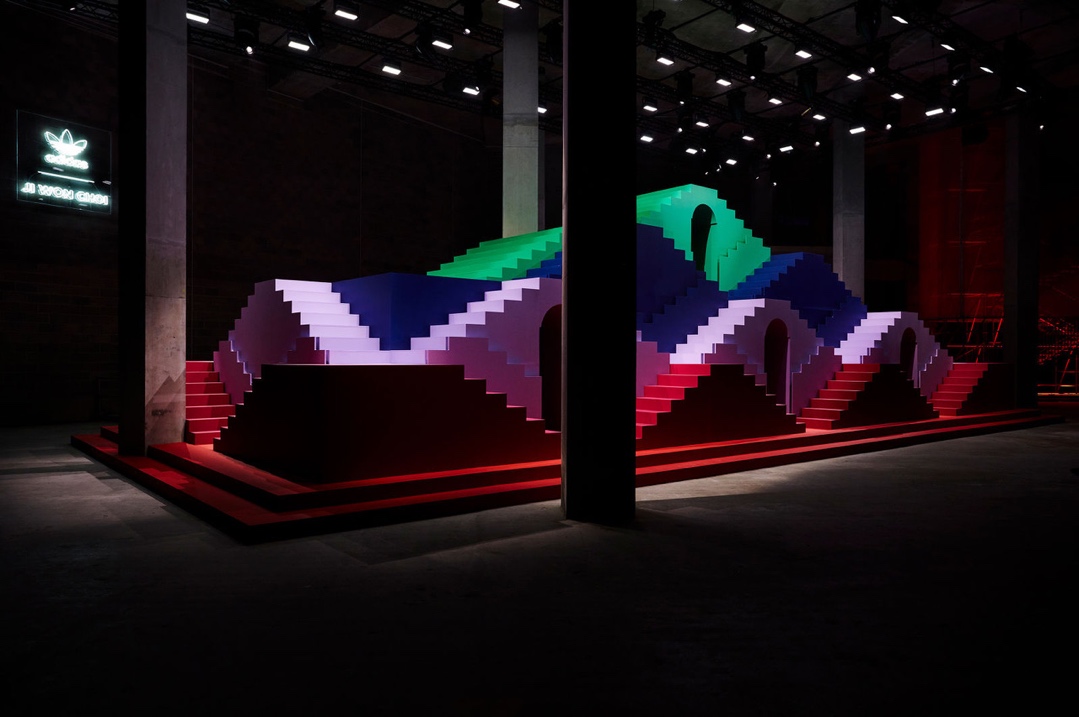
Adidas Original AW19.
Collaboration Process and Technique
What it’s like to put a show on and the dedication it requires.
Firstly, you're presented with a creative pack by production featuring the main ideas, references, loose information on the garments, and location photographs. Your job is to soak up the vision of the creative director and transform it into concrete, technical lighting design. A production drawing is then supplied, this will establish where sound, lighting, scenic elements, etc. will be positioned from the various departments. From the drawing you'll be able to understand how far and wide the runway is, understand how many fixtures you'll need and estimate the correct angles of lighting. Precision during this process is paramount.
Choosing the appropriate lighting instrument is also very important: you need to pick the right light for the job, but you must be very careful of what the lamps look like and understand how they will fit with the rest of the scene. You can't use masculine and techy looking moving lights if the show's inspirations were femininity and nature. Everything has to be carefully selected.
Once on site, the job is to create an atmosphere in the location whilst properly and evenly illuminating the runway, making the models and garments as beautiful as possible, and giving the cameras and the photographers enough exposure. Ultimately, what sells the collection are the show videos and photographs.
Creating Atmosphere
You aren't just lighting for one medium: you're lighting for the audience, for the stills cameras, for the video cameras and lastly, for smartphones. Guests will post on social media; it's all about the experience.
I was taught that guest experience comes first; if we can keep levels to a minimum then everything looks better. The clothes are important, but I always think that if you're really desperate to look at the clothes, you can always go to the showroom. It's called fashion show for a reason, the designer is presenting his collection to the world and there needs to be drama about it.
Another important task is to create a more dramatic atmosphere before the show, when the guests first walk into the location; this is essential as it sets a mood for the show. These transitions can be highly creative.
Pushing the Boundaries on Creativity
Certain brands are keen to push the boundaries. I love working on Alexander McQueen shows because of the history of the brand. Each show is carefully considered and there is a desire to go for theatrical and intense looks. I have been working on the McQueen shows as an associate for Manolo since 2014 and, even though I am now a lighting designer myself, I still truly enjoy collaborating with my mentor on those shows as I constantly learn new techniques. Other brands I work for require a clear, almost clinical look instead, so you need to forget about drama and embrace a world without shadows. Erdem for instance is soft spoken, classic, and gentle; he likes lighting that looks clean and elegant, whilst Wales Bonner embraces change and creativity and pushing the boundaries.
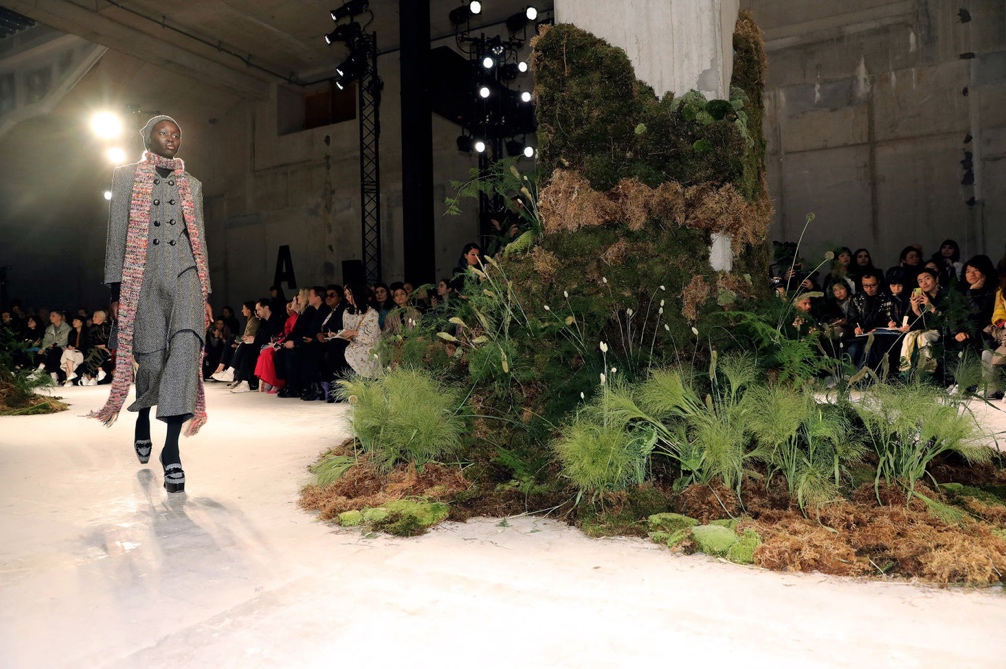
Alexa Chung AW19.
Finding Inspiration
With a love for and foundation in cinematography, there’s a broadening source of inspiration.
I still feel very close to film. I believe there is nothing quite like a well shot and lit feature film. I reference movies in most of my work but my attention has now shifted, I get a lot of inspiration from art installation and architectural lighting. Visually speaking, the latter two mediums are closer to what I do these days. I spend a lot of times researching new technologies and different ways to light a space. We're getting to a point now where a lot of different mediums are blending together, which is super exciting.
Developing a Style
When it comes to lighting, Freddie focuses on the subject – the fashion – and makes sure that his discreet lighting style enhances rather than distracts.
I'm not a big fan of huge visible rigs and techy equipment on site. I always try to come up with a way of using the minimum amount of fixtures and try to conceal them as much as possible. Rigging should also be as light and streamlined as possible; I'm a fan of tidy, geometric layouts. Lighting should be as natural as it can be, I was never a fan of light shows or tech. To me, dapple sunlight coming through a kitchen window is far more exciting than techy light show. Of course, there are situations where a technical looking rig and effects are chosen as part of the scenography.
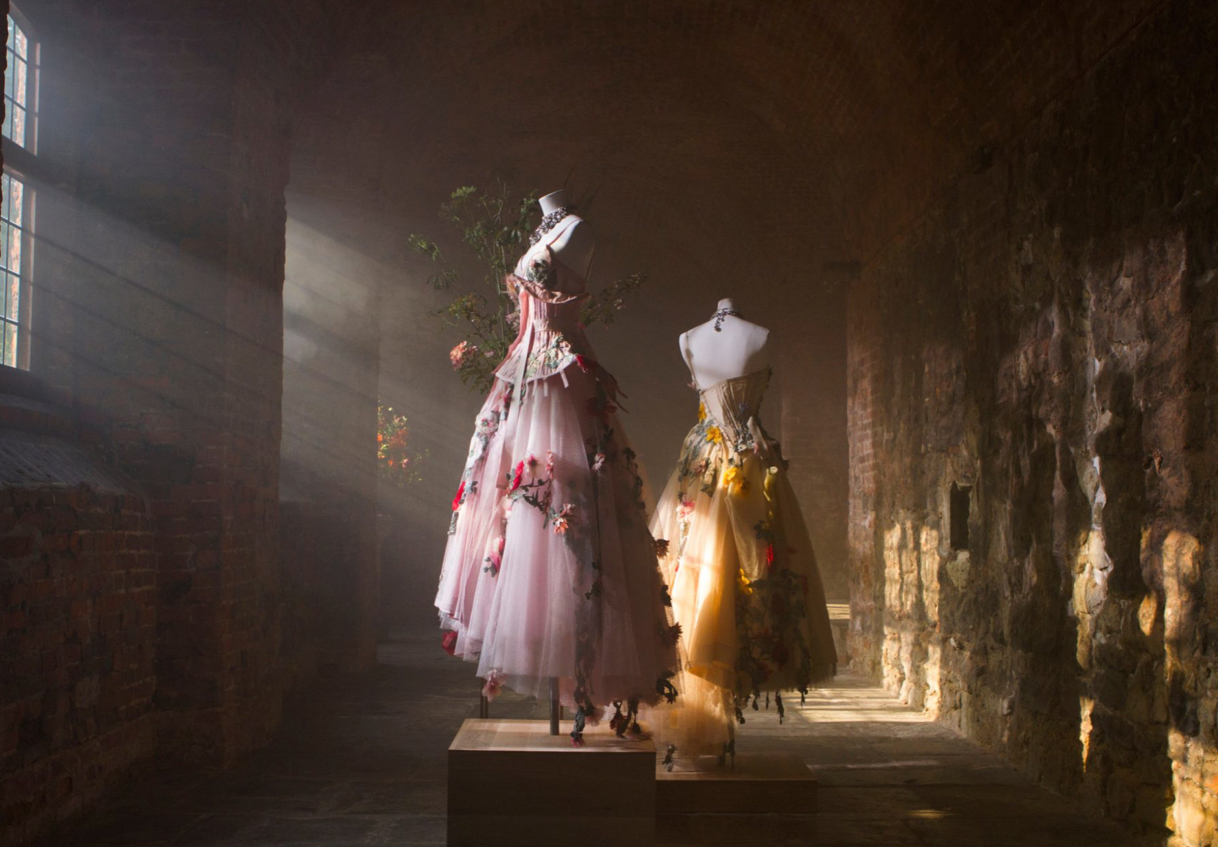
Alexander McQueen product launch.
Challenges in the Industry and in Lighting a Live Show
With a high-stakes, fast-paced environment there’s no shortage of challenges, but with that comes opportunity to evolve.
Although prep time is often adequate, it can get stressful pretty quickly, turnarounds can be very tricky. During Fashion Week I often have seven shows in a single week, preparation is essential. You have to have the mental strength and ability to be as sharp, as polite, and as effective as possible.
Shows can literally be one after the other, therefore having a trusted gaffer, programmer, and a solid electrical crew will make your life very easy. In London I use Mark Gardiner, who is fantastic. Having him on our side with Panalux's all-around support is absolutely invaluable.
Advancements in Equipment & Methods of Approach
Not relying on a single light, Freddie uses different lights that best fit a space in line with the scenography and as clean as possible.
I think the exciting thing about moving from film to fashion was discovering intelligent lighting and using light fixtures in a way that you never normally do in film. It took me a whilst to catch up and to learn how to use moving lights properly!
Today, intelligent lighting dominates the market and each year huge progress is made with colour temperature, brightess etc. But I still think that sometimes there's nothing better than old school tungsten, especially on more classic shows were skin tones are key. I think halogen is still the best form of light that you can use in a dark space or a dark show. Having said that, ETC have done wonders with the seven colour Source 4 Lustr 2.
I'm a big Stanley Kubrick fan and what I love about Stanley Kubrick movies is the use of practical lighting, where the sets are often lit by carefully designed scenographic elements. If you look at the latest Burberry show I worked on, most of the lighting was practical. The first room was all lit by a LED light box, a huge thirty-metre scenic piece which hung above the runway. In the second room, I designed twelve bespoke LED discs, geometrically laid within the circular set. We completely broke the rules on that show and did something more architectural and functional.
Working with Panalux
I'm happy to say that Panalux have always been very supportive in my career. I am very fond of Kelly and Karine in the film department, and Ewan in the events department often goes above and beyond to find the right equipment for our shows. A special shout out to Jim Algar, the senior technical manager, always ready to dive into complicated technical questions and shine some light - no pun intended - on the situation.
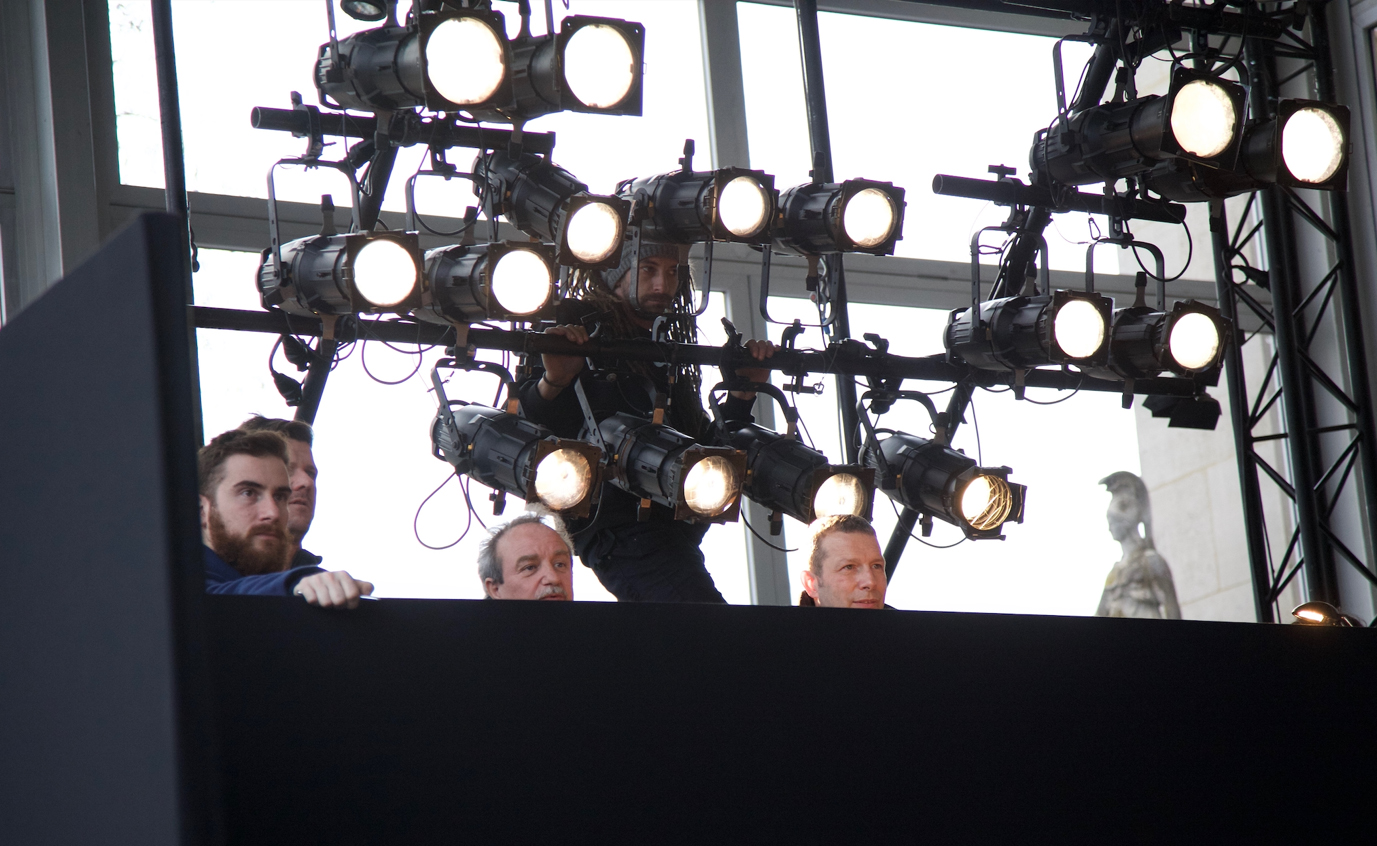
Checking runway levels.
What Lies Ahead
Apart from continuing to work on some incredible fashion show, including one for McQueen in Moscow, and building Raiden Studios to have a team behind it – Freddie is looking at new, unique opportunities.
There's a lot going on in the pipeline, as an emerging company we are trying to expand our network at home and abroad whilst expanding our scope to interior and architectural lighting design. Another exciting prospect is the rise of immersive and live experimental events and installations, I feel like the potential in this field is huge. We are currently developing some very exciting projects.
Potential Collaborations
I'd love to do more fashion shows in New York, Milan and Paris, working with younger designers and pushing boundaries. We have also been in touch with several visual artists, projection whiz and designers. I really believe that collaboration is key in this industry. If you get the right group of people together, there really is no limit to create something special.
Check out Raiden Studio and Freddie’s Instagram (@freddiebonfa) for more!